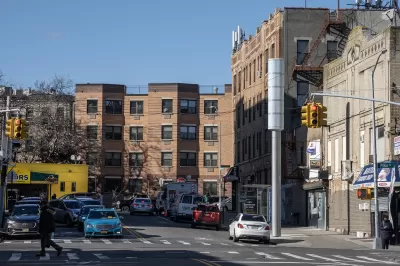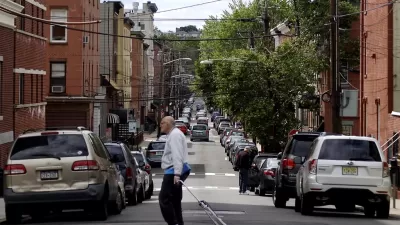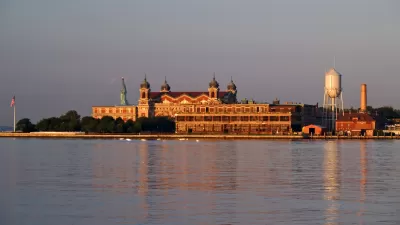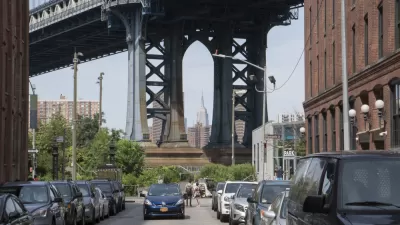More than 2,000 32-foot towers are coming to New York City street corners to improve 5G connectivity throughout the city, and residents aren’t happy, citing incompatible design and visual distraction as a threat to safety.

Over the past two years, 150, 32-foot-tall 5G towers have popped up around New York City, as part of the city’s effort to upgrade its wireless service. The initiative was announced back in 2014 and touted as one of the largest and most ambitious WiFi networks in the world. The large “smart poles” have drawn strong reaction from residents in some neighborhoods, particularly historic districts, where they say the futuristic silver and gray aesthetic, transmitter-covered tops, and even video displays stick out like sore thumbs. “At least 16 community boards across the city — representing approximately two million New Yorkers — have voiced concerns about the 5G tower rollout,” writes Dodai Stewart in a New York Times article. “[T]he state’s Historic Preservation Office recently warned that tall towers would have an adverse effect on landmark blocks in the Greenwich Village Historic District,” saying the “incompatible design” of the poles would “create a visual distraction.”
City representatives say they will not be deterred by NIMBYism, but with another 2,000 towers slated for installation citywide, the pushback will likely grow. “Many of the locations of Link5G towers (as well as LinkNYC Wi-Fi kiosks, which do not have towers) were previously home to public pay phones,” which officials say took up much more space. Nick Colivin, the chief executive of LinkNYC, told the New York Times that the mission of LinkNYC and the 5G program is to provide digital connectivity for free to everyone in the city, which he contends is critical for people to be able to “participate in the economy, apply for jobs, interact with the government, pay a parking ticket,” and more. But he knows what he’s up against, Stewart writes. “It’s always hard, in a city like New York, to change things,” he told her.
FULL STORY: Does New York City Really Need These Giant 5G Towers?

Study: Maui’s Plan to Convert Vacation Rentals to Long-Term Housing Could Cause Nearly $1 Billion Economic Loss
The plan would reduce visitor accommodation by 25,% resulting in 1,900 jobs lost.

North Texas Transit Leaders Tout Benefits of TOD for Growing Region
At a summit focused on transit-oriented development, policymakers discussed how North Texas’ expanded light rail system can serve as a tool for economic growth.

Why Should We Subsidize Public Transportation?
Many public transit agencies face financial stress due to rising costs, declining fare revenue, and declining subsidies. Transit advocates must provide a strong business case for increasing public transit funding.

How to Make US Trains Faster
Changes to boarding platforms and a switch to electric trains could improve U.S. passenger rail service without the added cost of high-speed rail.

Columbia’s Revitalized ‘Loop’ Is a Hub for Local Entrepreneurs
A focus on small businesses is helping a commercial corridor in Columbia, Missouri thrive.

Invasive Insect Threatens Minnesota’s Ash Forests
The Emerald Ash Borer is a rapidly spreading invasive pest threatening Minnesota’s ash trees, and homeowners are encouraged to plant diverse replacement species, avoid moving ash firewood, and monitor for signs of infestation.
Urban Design for Planners 1: Software Tools
This six-course series explores essential urban design concepts using open source software and equips planners with the tools they need to participate fully in the urban design process.
Planning for Universal Design
Learn the tools for implementing Universal Design in planning regulations.
Ascent Environmental
Borough of Carlisle
Institute for Housing and Urban Development Studies (IHS)
City of Grandview
Harvard GSD Executive Education
Toledo-Lucas County Plan Commissions
Salt Lake City
NYU Wagner Graduate School of Public Service





























